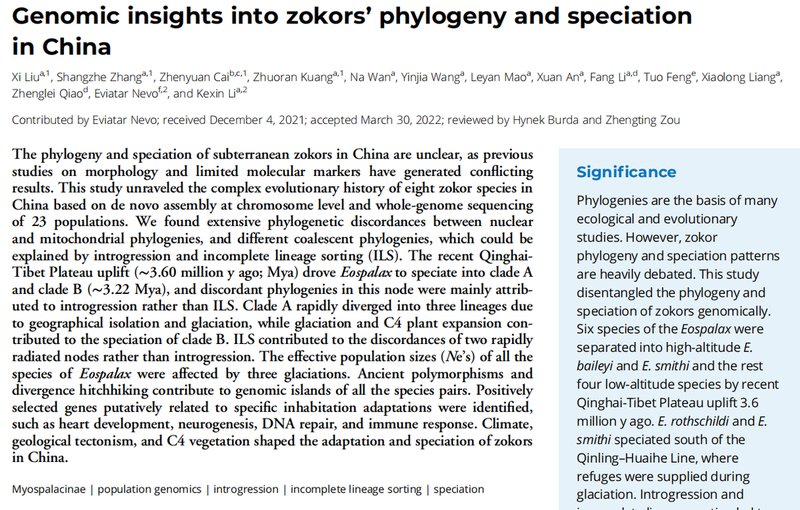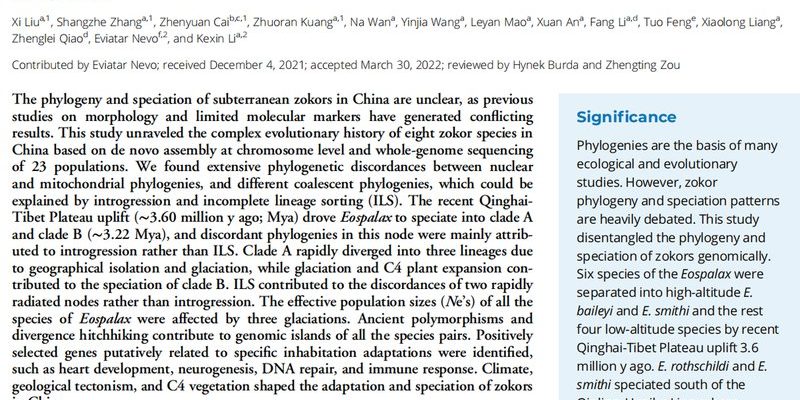
Think of the zokor as a living time capsule. Its lineage stretches back millions of years, showing us just how adaptable life can be. From its specialized claws designed for digging to its unique diet, each aspect of the zokor has evolved to help it thrive in a challenging environment. So, let’s dive into the evolutionary journey of the zokor and discover what makes this creature special.
What is a Zokor?
To kick things off, let’s get a clearer picture of what a zokor actually is. Zokors are small, burrowing rodents that belong to the family Spalacidae. You’ll typically find them in countries like Mongolia, China, and Kazakhstan. They have a stocky build, short limbs, and a blunt snout, which makes them look like little furry balls of energy.
A unique feature of these critters is their long, strong claws. These aren’t just for show! They help zokors dig extensive tunnel systems in search of food, mostly consisting of roots and tubers. It’s like they’re little underground gardeners, constantly aerating the soil and helping plants flourish. Honestly, they’re like nature’s engineers!
The Fossil Record: A Glimpse into the Past
Here’s the thing about studying the evolutionary history of the zokor: it starts with fossils. Fossil evidence shows that zokors, or their ancestors, roamed the earth over **30 million years ago**. These fossils tell us a story of adaptation.
For example, ancient zokors had some different features compared to today’s species. Their teeth and skull structures varied, indicating they had diverse diets. As climates changed and their habitats transformed, these little creatures evolved to survive. They adapted to digging deeper and finding food in harsher conditions, all while staying out of sight from predators.
By examining these fossils, scientists can piece together the journey of the zokor. It was a path marked by resilience and transformation, reflecting how life evolves to meet the challenges of its environment.
Key Adaptations Over Time
So, what exactly are some of the major adaptations that helped the zokor thrive? Here’s a quick rundown:
- Burrowing Skills: Over time, zokors developed powerful forelimbs and long claws, perfectly designed for digging. This allows them to create extensive tunnel systems that can stretch for hundreds of meters!
- Temperature Regulation: Living underground means dealing with temperature fluctuations. Zokors have evolved to maintain a stable body temperature, even in extreme conditions. This isn’t just cool—it’s essential for survival.
- Dietary Adaptations: As primarily herbivores, zokors have specialized teeth for gnawing on tough roots and tubers. This specialization means they can thrive even when food is sparse.
Each of these adaptations speaks volumes about how evolution works. When faced with challenges, species like the zokor don’t just survive; they adapt and find creative solutions to thrive.
The Role of the Zokor in Its Ecosystem
Now that we know a bit about zokors and their history, let’s talk about their role in the ecosystem. You might be wondering why this matters. Simply put, zokors are vital for the health of their environment!
By digging tunnels, they help aerate the soil, allowing water and nutrients to reach plant roots more effectively. This activity encourages plant growth, which in turn supports a host of other animals. Think of zokors as unsung heroes of the grassland ecosystem, working behind the scenes to keep everything running smoothly.
Also, their burrowing behavior creates homes for other creatures. Not only do they provide a habitat, but their tunnels can also serve as pathways for various small animals. When you look at the big picture, it becomes clear that zokors are a small but critical part of their ecosystem.
Conservation Status and Threats
Despite their importance, zokors face numerous pressures in today’s world. Here’s a reality check: habitat loss due to agriculture and urban development is taking a toll. As humans expand their territories, the zokor’s natural habitats shrink, making survival harder.
Moreover, climate change poses another layer of threat. Altered weather patterns can affect food availability and disrupt their burrowing activities. In some regions, zokors are also hunted for their fur, adding to their challenges.
Understanding these threats is crucial for conservation efforts. By raising awareness about the zokor and its ecosystem, we can help advocate for solutions that protect these remarkable animals and their habitats.
How the Zokor Compares to Other Burrowing Animals
Let’s take a moment to compare the zokor with other burrowing animals. You might have heard of moles and gophers, which share some similarities with zokors. While they all dig, each species has unique adaptations suited to their environments.
For instance, moles have specialized bodies for swimming through soil, while gophers often create larger burrow systems. Zokors, however, excel in their skill of digging deep and creating complex networks.
To simplify, think of it like this: it’s not just about who digs better; it’s about how each creature fits into its unique ecological niche. Each burrowing animal brings its own talents to the table, creating a rich tapestry of life underground.
Final Thoughts on the Zokor’s Evolutionary Journey
So, what can we take away from the zokor’s evolutionary history? It’s a reminder of the intricate connections in nature. Zokors have adapted over millions of years to survive in their specific environments. Their story shows how life constantly evolves, shaped by the challenges it faces.
As we learn more about these fascinating little creatures, we develop a deeper appreciation for the biodiversity that surrounds us. By studying the zokor and advocating for its conservation, we’re not just protecting a species; we’re supporting the health of the entire ecosystem.
In short, the evolution of the zokor is more than just a tale of survival. It’s a journey through time that reflects the resilience and adaptability of life on Earth. So, the next time you think about engineering marvels, remember to give a nod to the humble zokor, a true testament to nature’s ingenuity!

